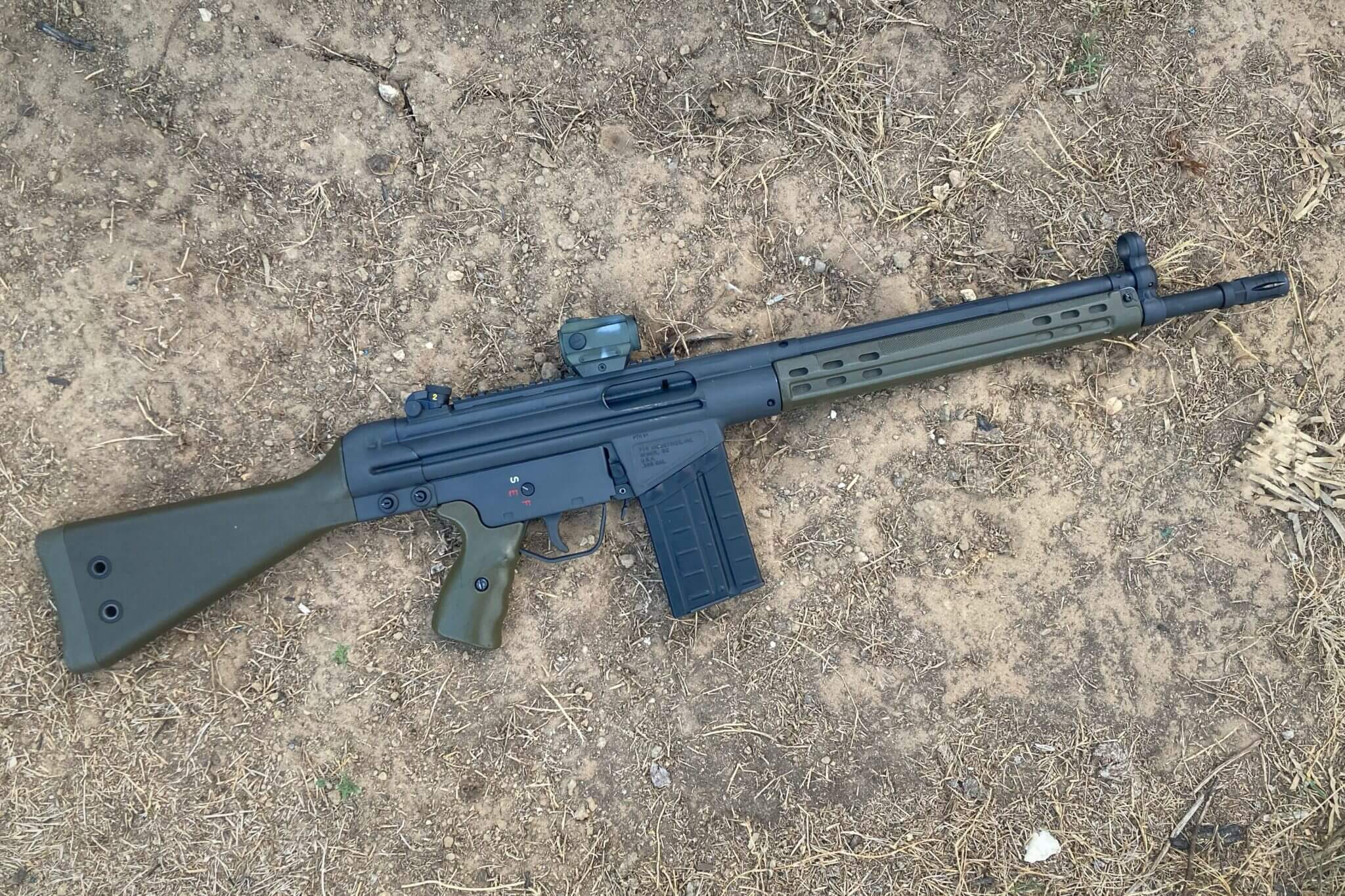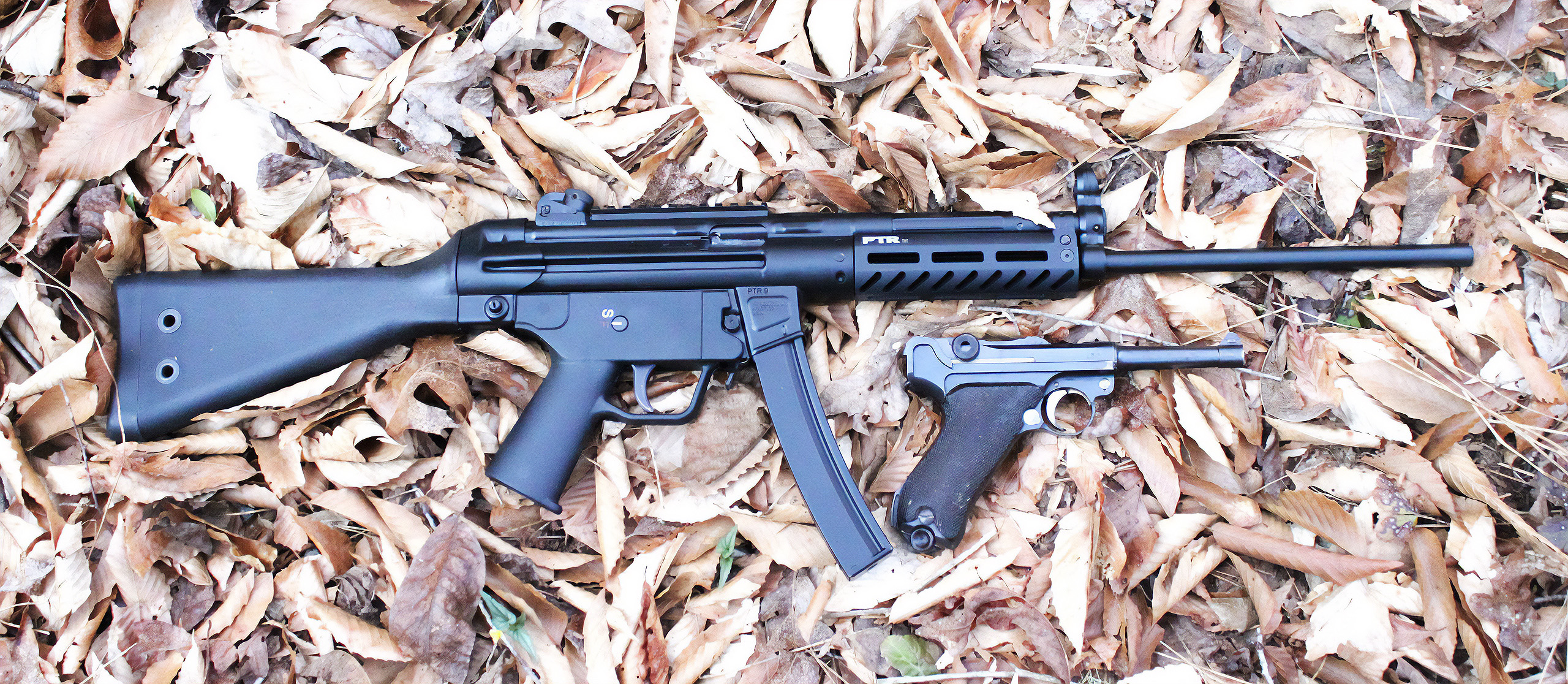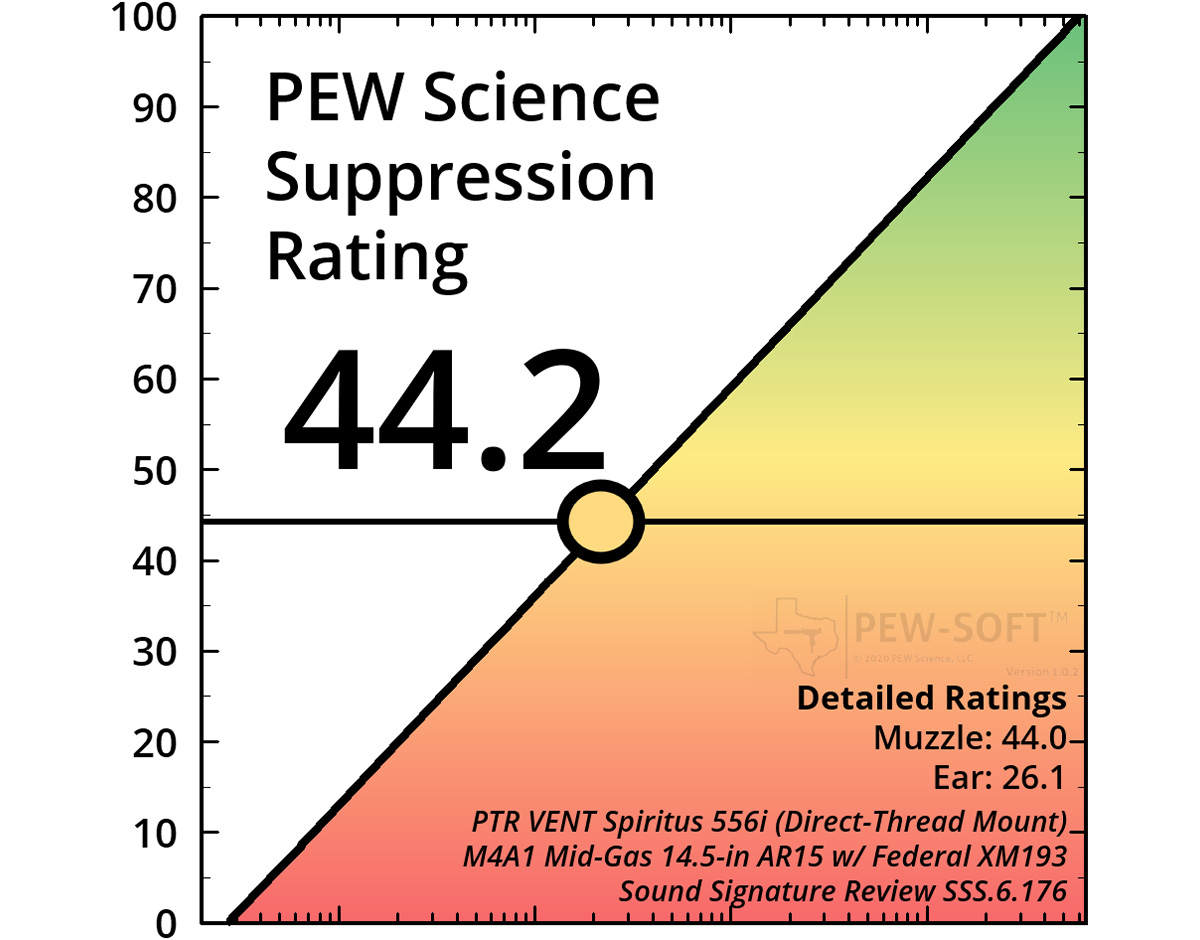PTR is carrying on the G3 legacy with its domestically available battle rifles. The GIRK blends iconic Cold War aesthetics with a few modern features to make it even more relevant in today’s market.
Table of contents
PTR’s History
After joining NATO in 1955, West Germany needed a new service rifle chambered in the standard 7.62×51 NATO cartridge. Like many NATO countries, West Germany was interested in the FAL but FN denied Germany the license to produce it domestically. In response, Germany developed the G3.
Throughout the 1960s and 70s, the G3’s popularity grew. Over 40 countries adopted it for use by their armed forces and eighteen secured licenses for production. One of those was Portugal which produced licensed HK rifles until their factory’s closure in 1998.
At that point, the American company JDL Enterprises purchased the Portuguese G3 tooling as the factory’s equipment was liquidated. By 2002 JDL was producing US-made rifles identical to the civilian G3 (HK-91). In 2005 JDL was bought out by PTR-91 Inc. and they have continued production to this day.
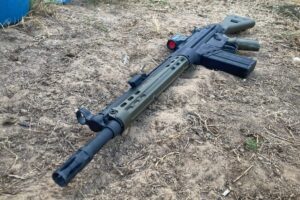
GIRK Barrel and Optics
My GIRK, also known as the PTR-113, features a 16-inch barrel and omnidirectional flash hider. If the flash hider isn’t to your liking, you can swap it out with any thirty-caliber muzzle device threaded ⅝x24. The barrel has a tapered profile and a 1 in 10” twist rate.
The receiver is stamped steel with a section of Picatinny TIG welded to the top. This optics rail is one of the features that modernize the rifle as it is much more convenient than the clamp-on system that is typically used with the G3. I originally mounted a low-profile Holosun red dot. Sitting low on the rifle, this optic had great form but the function was lacking. Even this small red dot was not low enough to co-witness with the GIRK’s barrel-style iron sights.
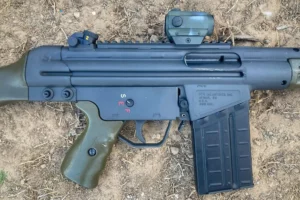
After that, I decided to mount a Primary Arms SLx 1-10. This LPVO mounted in medium-height rings works well. The scope is short enough to not impede the function of the charging handle and the 1-10x magnification can take full advantage of the rifle’s effective range.
Read More: Primary Arms’ New SLx 1-10
To get a proper cheek weld I had to mount the scope relatively low which required me to remove the rear sight. You only have to remove a single screw and the sight pops right off. I could use a cheek riser and a taller mount to clear the sight but that would add unnecessary weight and bulk to an already hefty rifle. With an unloaded weight of 9.3 pounds, this rifle is slightly heavier than modern 16” 308 battle rifles but not by much.
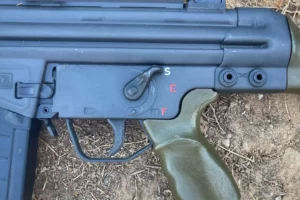
Ergonomics and Operation
The ergonomics aren’t quite up to speed when compared to modern rifles either. I am not sure if the 1950s H&K engineers had hands 50% larger than my own, but from the placement of the safety and mag release, it sure seems that way. The safety selector is just out of the reach of my thumb until I break my grip and rotate my hand slightly toward the left side. The mag release button placement is even worse. My outstretched index finger falls an inch shy of the button. Thankfully the GIRK also features a secondary paddle-style mag release which has become my preferred way to swap mags.
The reloading process is fairly straightforward. Although, certain considerations must be made since the is no last-round bolt hold open. The most common practice is to manually lock the bolt open, drop the empty mag using the paddle release, insert a full mag, and slap the bolt handle to send the bolt forward thus chambering a round. Full mags can be inserted on a closed bolt but since you have to rack the bolt anyway, why not lock it back and make it a little easier on yourself?
Another learning curve in the G3 reload is that you have to rock the mag into place. Instead of pushing the mag straight into the magwell as you do with an AR15, this is more similar to an M14 or AK. You insert the front edge of the mag first then rotate the back in until it locks. If you are unfamiliar with this concept it may feel awkward at first but it doesn’t take long to get used to.
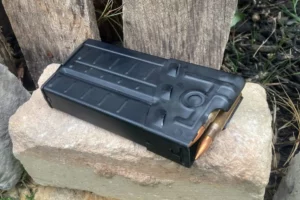
Surplus Components
Surplus mags for the G3 are very common and cost around seven dollars each. The rifle comes with one of these twenty-round surplus mags and mine has functioned just fine.
This model features a green surplus handguard, stock, and pistol grip. These readily available surplus parts lower the production costs of the rifle and mirror the aesthetics of the G3A3. The A3 variant was one of the most widely produced so it is also one of the most recognisable.
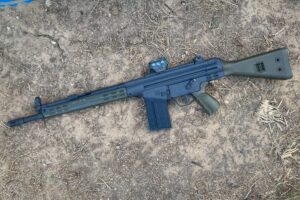
I had second thoughts before drilling through the handguard to mount my weapon light but then I saw that the entire surplus furniture set only cost about thirty dollars so I continued without hesitation. I could get an aftermarket M-Lok handguard but I like the classic look and would like to keep it as original as possible.
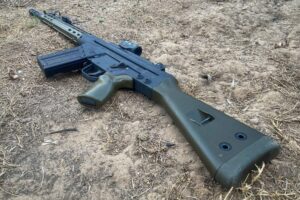
Exelent Modularity
Something else I find neat is the G3’s modularity. The entire rifle can be disassembled by removing just a few push pins. Want a new stock? Just pop out two pins and slap on a different one. How about a different handguard? Just pop out a single pin. There are even little ports in the stock to store the pins while the rifle is disassembled.
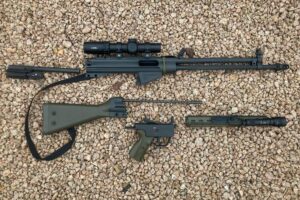
Operating System
If this rifle’s aesthetics don’t pique your interest maybe the mechanics will. The roller-delayed blowback system found in this rifle is incredibly interesting. Blowback-operated guns are some of the simplest mechanisms but they are typically relegated to pistol calibers only. Rifle calibers produce too much pressure to be used in a conventional blowback system. With roller-delayed blowback, the bolt is locked in place by the rollers. After the shot is fired, a small percentage of the recoil is transmitted through the rollers to cycle the bolt, and the rest of the force is transferred to the receiver.
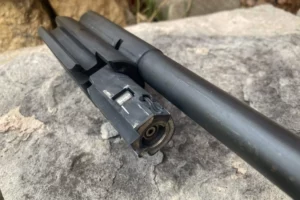
This operating system is known to be very reliable thanks to its simplicity. The recoil feels more like a shove than the snappy punch that you get from gas-operated rifles. Fans of the system appreciate the force being spread out over a longer period. Critics argue that the cycle slows down your follow-up shots. Personally, I like the feel of the PTR GIRK’s recoil and I had no trouble quickly stacking rounds on target.
Trigger
The greatest flaw I see in this rifle is the trigger. When you pull the trigger it starts heavy and then gives way to a long takeup then becomes heavy again as you reach a soft wall. The force builds as you pull through the wall until the trigger breaks at just over eight pounds. Yeah, it sucks. But like anything, the more you practice the better you’ll get. The only time it really bothered me was while shooting groups from the bench. The rest of the time I didn’t notice it too much.
Accuracy
I got decent groups from a couple of brands of ammunition. 168gr ADI Sierra Match did the best with a 1.5” group. A close second best was a real surprise. 150gr Tula was just marginally worse than the ADI. The other rounds opened up to around 3.5”.
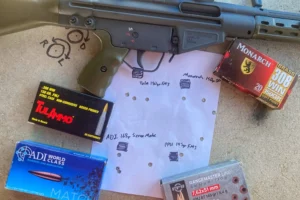
I realize that a rifle’s performance can’t be summed up in a few three-round groups but it does give you an idea of what to expect. I wouldn’t call it a tack driver but it is good enough to be effective in most situations. I’ve shot this rifle out to five hundred yards and after two shots to figure out my holds, I was able to consistently put rounds on a ten-inch target. No problem there.
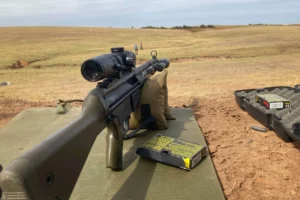
Suppressor Issues
From my experience, the rifle does not like to be suppressed. It started having stoppages about every five to ten rounds where I had only had one the entire time before adding the suppressor. I have heard that the roller delay mechanism would wear more quickly when shooting suppressed but I never expected the reliability to tank. The reliability came back after removing the suppressor so I am confident that is the source of the problem.
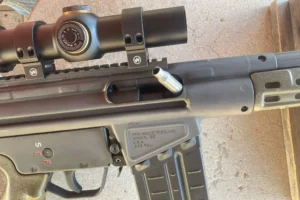
I contacted a PTR engineer about the reliability issues and found that I needed a different locking piece. Similar to adding a heavier buffer or smaller gas port to an AR, the G3 needs a locking piece with a shallower shoulder angle to manage the increased back pressure generated by the suppressor. PTR suggested replacing the stock 45-degree locking piece with an aftermarket 40-degree piece. If that does not work, a 36-degree locking piece may be required.
These components are made by Rim Country Manufacturing and sold for around $50. Genuine HK replacements are available from HKParts.net but they cost $230. PTR’s engineer said the Rim County parts are “very reputable” so I would avoid the extra cost and get the Rim County locking piece if you plan to suppress the PTR GIRK.

Final Thoughts on the PTR GIRK
Do I recommend someone buy this as their primary self-defense rifle? Probably not, but not everything has to be so serious. Everyone loves a couple of guns even though they aren’t the most practical. For me, this is one of those rifles. The poor control ergonomics and the questionable reliability of a suppressor don’t take away from how fun it is to shoot.
The current MSRP on the PTR GIRK is $1579. That is about on par with mid-tier AR10s so it seems like a fair price. Check out the GIRK Product Page for more information or to find a dealer near you.

